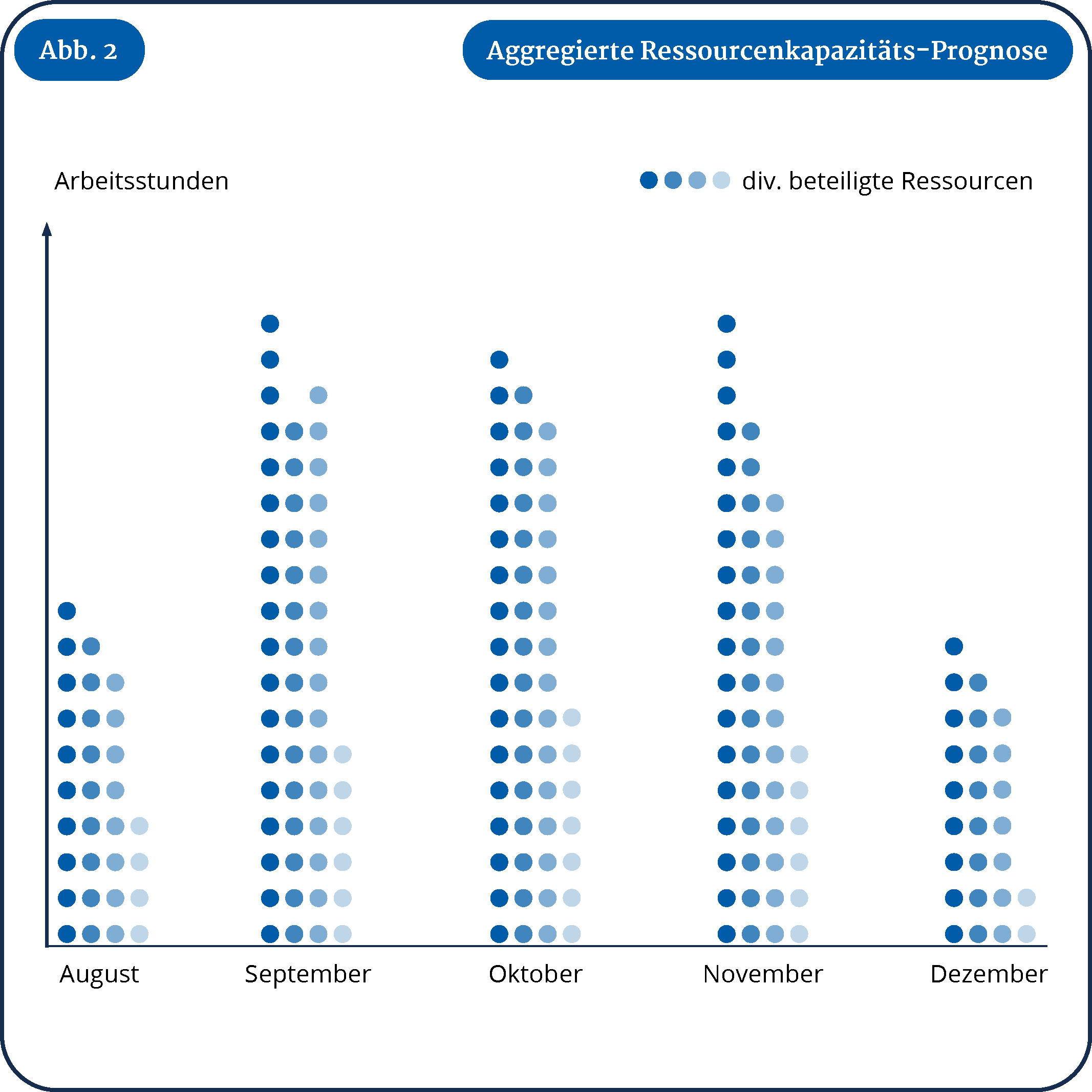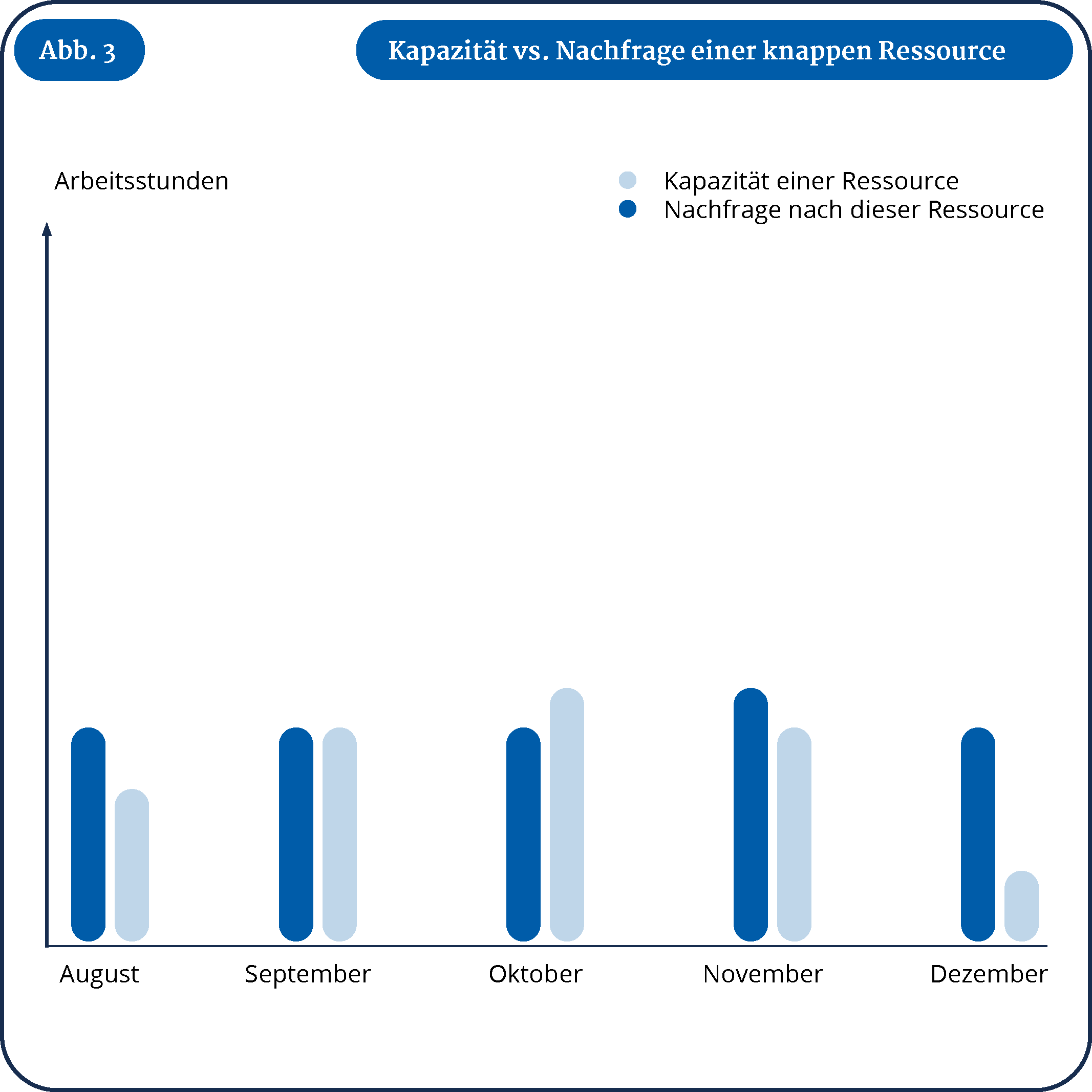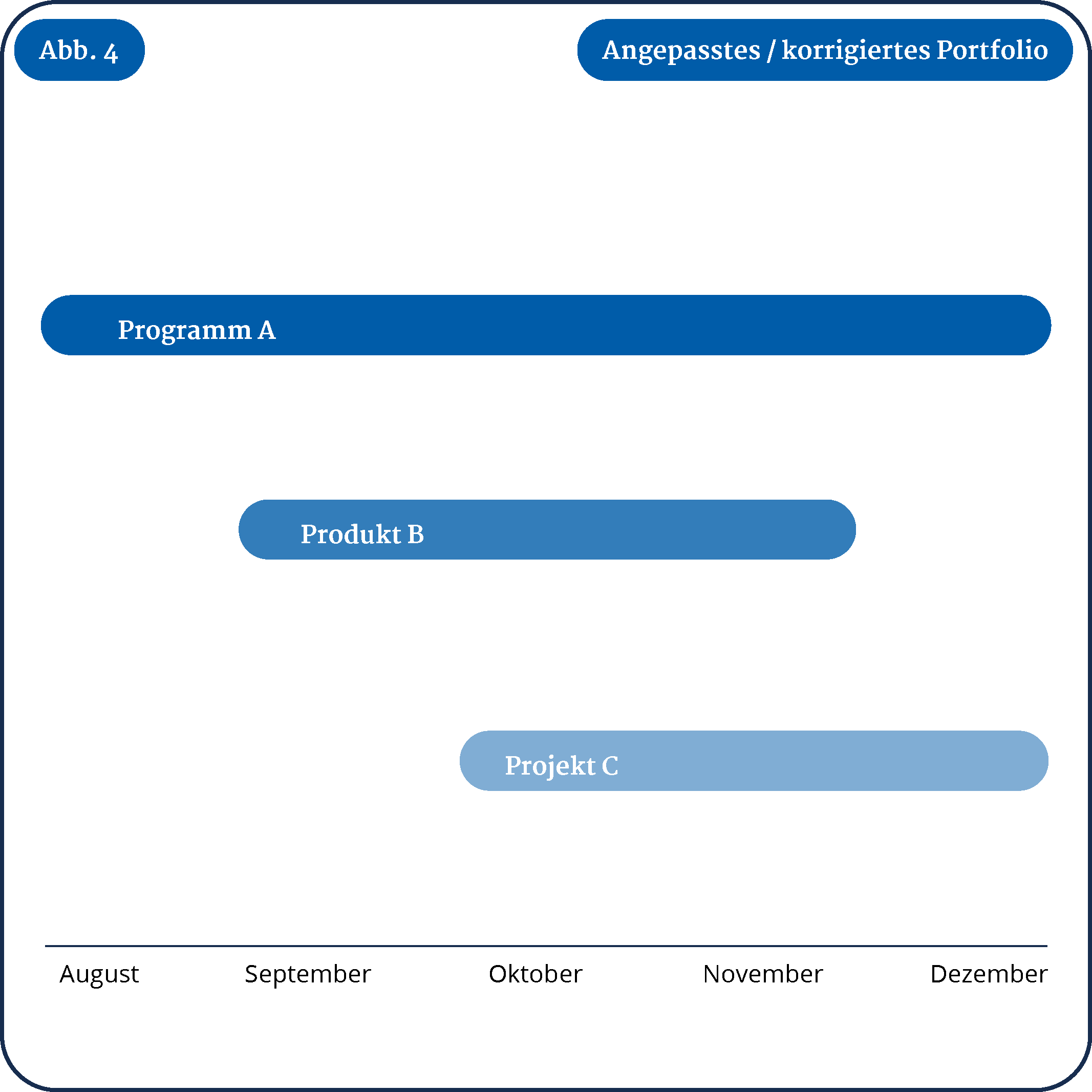6 min read
Agile planning of resources and capacities - (how) is that possible?
![]() Michael Fenske
:
06.11.2020
Michael Fenske
:
06.11.2020
IT companies in particular have it easy when it comes to project portfolio management - one might think so. After all, they usually only have to take one resource into account in resource management, namely their employees.
But anyone who relies on the instrument of time recording by teams for resource planning has only an unreliable tool at hand. We show you how to use existing program and project management software to make your resource and staff planning agile.
Content
Challenges
- Executives in program and portfolio management who only rely on project time tracking as a planning tool will not be able to react quickly enough to the dynamic demand for resources, especially from initiation projects.
- Time recording in project teams is often not reliable and is sometimes not implemented in real time. It is also not suitable for deriving future forecasts for actual capacity from it.
- Also, interdependencies between projects, priority changes or delays can hardly be detected with the purely time-recording-based analysis.
Recommendations
As a project portfolio manager or portfolio management executive, would you like to permanently improve your resource management and capacity planning? Then you should take a closer look at these recommendations:
- Rather than rely on pure time recording, rely on insights from the aggregated resource capacity. In this way, you can more quickly detect and (partially) remove resource restrictions.
- Make an ongoing forecast of this same aggregated resource capacity as a starting point for a forward-looking view of actual capacity.
- Carry out a regular analysis of aggregate resource capacity to assess the impact of shifts in priorities or delays in initiation processes.
In order to be able to implement these points efficiently within the framework of an agile project portfolio management, you should be supported by a powerful PPM or PMO software. IT project portfolio management in particular benefits from tools that understand skill-based resource management and allocate resources accordingly to the project management portfolio.
Introduction
It is a discrepancy of the digital age: While on the one hand digitization makes it possible to quickly realize programs, projects or even new products, on the other hand many responsible persons in the Project Management Office still rely on data from time recording to react to challenges or to record resource capacities. With all its negative aspects like latency, inconsistency or inaccuracies. As a result, an agile evaluation of resource supply on the one hand and demand on the other hand is difficult.
But there is good news: with aggregated planning and forecasting models you have precise instruments for resource planning. And often these can be used with the software you already have! So let's start right away to make your resource planning (for example in the IT project portfolio) more reliable and agile!
1. use aggregated planning and forecasting techniques
In the manufacturing industry, aggregated planning and forecasting are part of the supply chain organization's toolbox. For a medium-term horizon (about three to 18 months), resources are pooled (i.e. aggregated) to determine the extent to which demand can be met. The number of variables with which supply and demand can be reconciled can be very large - from raw materials to logistics, labour, machine capacity, physical capacity and distribution.
However, if you want to acquire aggregated planning and forecasting for your PMO in IT, it's easier because there is only one variable to consider in capacity planning: the workforce*. This makes it all the more important to be able to reliably and accurately record and evaluate this variable - and that you no longer rely solely on time reports as a measure of capacity planning. This is because they often arrive at the decision level of the Project Management Office with a time delay, are not always accurate and say little about the skill-based deployment, i.e. the skills of the human resource.
At the portfolio level, aggregated principles make it possible to better respond to resource requirements in the present and future. At the execution level, on the other hand, time reporting has a raison d'être - namely, among other things, to determine whether personnel resources are being used too much or too little, to record costs and thus to be able to assess future developments.
2. use PPM software to identify resource constraints
Let us return to our example from industry: If the output of a production is to be maintained (or even increased) at a consistently high level, it is necessary to identify and eliminate bottlenecks in processes as quickly as possible. Agile methods and approaches are required to distribute resources correctly and achieve the desired output. It is hardly any different in the PPM of IT companies. There, keyword aggregation, the team members working on the various initiatives are combined in resource pools.
And how does PPM software tackle this issue? How can it help to track down limited resources, close gaps through resource planning and - at best - remove resource restrictions through skill management? This is shown in the following illustrations, which are exemplary for the visual presentation of project and resource planning by PPM software.
Figure 1 shows a simplified initiative portfolio with a forecast resource requirement.
If you enter the expected hours available in your PPM tool for each resource in your pools, you will get an overview of the aggregated number of hours that each pool can contribute to the provision and implementation of initiatives. This results in the aggregated capacity forecast shown in Figure 2. The graph shows how both the hourly capacity of each resource and the aggregated times of the resource group develop within the forecast period. It also shows that you need time recording from the executing level for the forecast - but once it has been incorporated into PPM, you are no longer dependent on it for further planning at project level.
Figure 2 shows you the shortage of resources in August and December.

In addition, it is immediately made visually clear that the brightest resource is under-represented within the group. This could prove to be a bottleneck in further project development and should be looked at more closely. In a PPM software, exactly this is possible - namely the isolated view on a single resource, as shown in figure 3:
Figure 3 shows you the demand and availability of a single resource over time.

Indeed, a bottleneck is revealed here in the months of August, November and December, when project demand will be higher than the resource is available. Such resource constraints may indicate several things, e.g:
• evidence of (too) few skills in the project
•Lack of skilled workers
•Disproportionately high demand for a resource pool at a given time
IT companies in particular often operate according to the minimal principle - they will try to achieve their project goals despite this scarcity of resources and only then, when it is incessant to close the gaps with external forces. This may work - but you should also consider that resource shortages in your company can be systemic. And you should get to the bottom of this when the opportunity arises.
You should do that:
- Identify all resources working on portfolio initiatives and assign them the estimated hours and planned utilization rate.
- Group (aggregate) these resources into pools and forecast the total hours of these resource pools for the following months.
- Identify the pools with resource shortages and make the necessary adjustments early(!) to avoid bottlenecks and achieve your goals.
3. use PPM software to get a preview of the aggregated resource capacity
It is recommended that you configure your PPM software so that it can continuously provide you with a forward-looking perspective for your resource planning. A reasonable timeframe for this should be three to six months, and this depends, among other things, on the following questions:
• How accurate should your demand forecast be?
• How early does a threatening shortage of resources usually announce itself
in your company?
• How does your portfolio look in general - traditional or agile, project-related
or product-related?
• How quickly are additional, external resources available if necessary?
• How effective is your skill management for balancing resources?
You can of course also solve a capacity or resource bottleneck by postponing the start of one (or more) initiatives. Figure 4 shows an example of this: Project C is delayed, which makes the overlap with other initiatives less dramatic.
Figure 4 shows you the effects of a portfolio correction

This reduces the demand for the already scarce resources during the holiday period, for example. Even in the event of such a shift, a PPM tool is useful in order to be able to estimate whether this will not cause new bottlenecks elsewhere or at another time.
You should do that:
- Determine a forecast horizon that makes sense for your company and your PMO.
- Make sure that valid capacity estimates are available - and kept up to date - for each resource team to put your forecasts on a stable footing.
- Get regular feedback from stakeholders to jointly confirm the forecast horizon and make any necessary adjustments.
4. use PPM software to assess the impact of priority changes or delays
"Match capacity to demand!". The big goal of aggregated resource planning reads as simple as this - but especially with IT initiatives of PMOs this is a task that probably never ends. The proactive management of your project portfolio benefits immensely from the tools of aggregated planning - and modern PPM software supports you in regularly carrying out aggregated forecasts and analyses, making your portfolio more predictable. With this you can, for example:
- Quickly identify resource bottlenecks, inform stakeholders and optimize resource allocation through new scheduling or prioritization, without losing sight of the strategic goal of the project portfolio.
- Provide fact-based decision support when a project is on the brink of failure.
- Activate additional manpower early on.
- Identify and reallocate excess capacity.
- Using active skills management to internally compensate for resource shortages.
Conclusion: It's all there. You just have to use it.
We hope that we could show you with our examples of aggregated planning and forecasting techniques that there is a modern and agile alternative to purely time-based project planning. And the best of it should be mentioned again: Most modern software solutions for project portfolio management come with a corresponding toolset, so that you can align your PMO accordingly!
You'll probably want to learn more about good resource planning now ... so why not get our free resource management whitepaper now!

And if you would like to know how your resource planning gets even more drive through agile skill management and the use of AI, we are always available for a discussion.
Here you can contact us.
Source: This article is based on a contribution by Gartner entitled "Expedite Resource and Capacity Management Analyses With PPM Tools"
Jetzt anmelden - Can Do Newsletter
Michael Fenske works as a freelance author for Can Do GmbH.
Why Do Projects Fail? 5 Common Reasons - And How to Avoid Them
Projects are often complex, and even with the best intentions and a competent team, success can elude us. But why do so...
Cost-Cutting - Increasing Efficiency Without Additional Resources
Cost-cutting is currently at the top of the agenda for many companies. In the face of economic uncertainty and rising...
.png?width=200&height=80&name=CanDo%20Logo%20transparent%20(500%20x%20200%20px).png)
